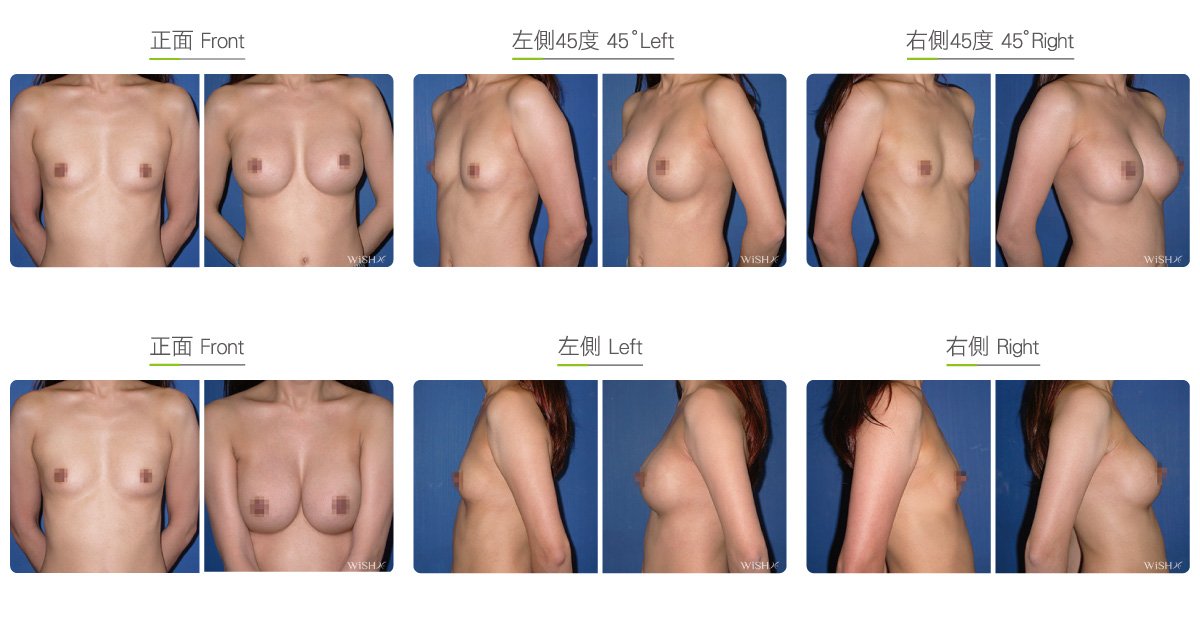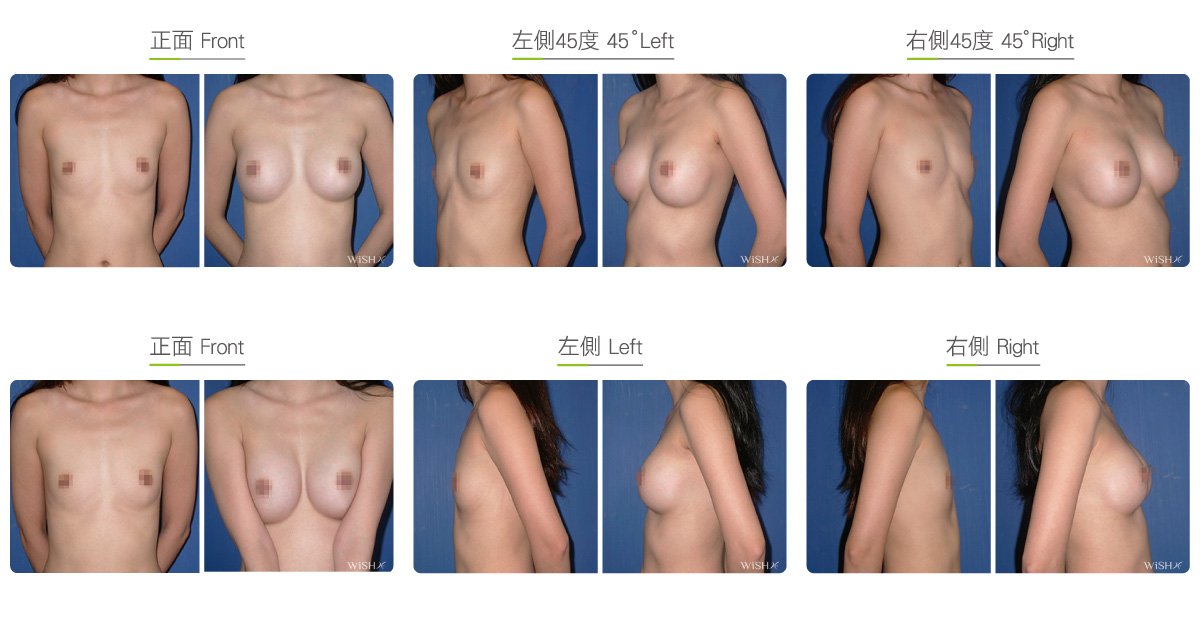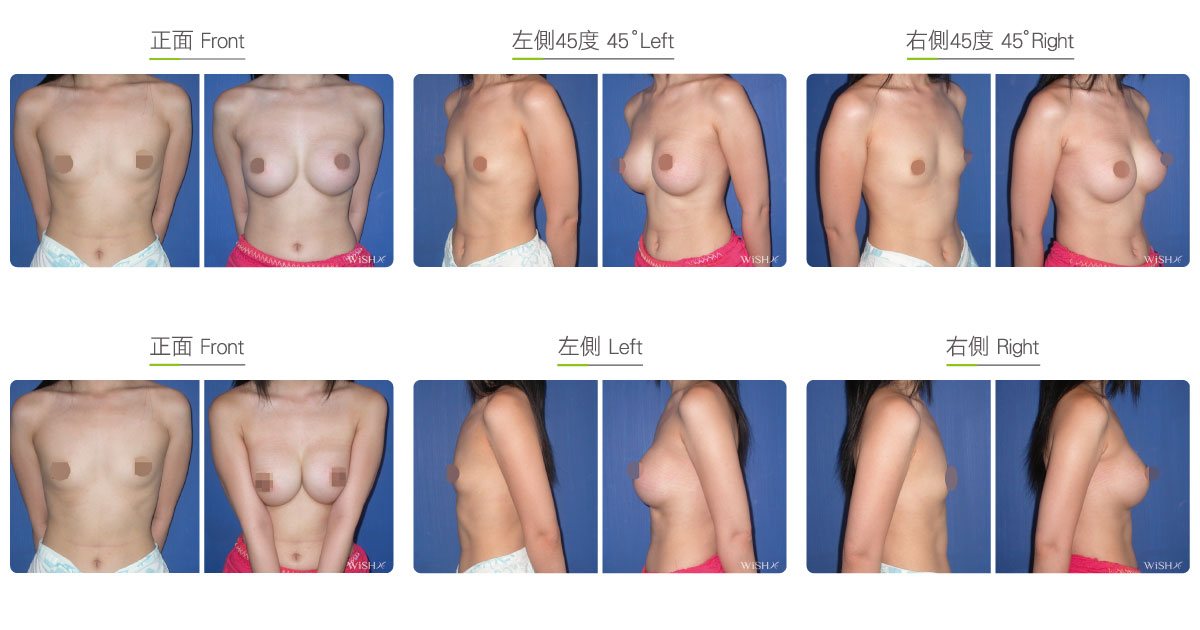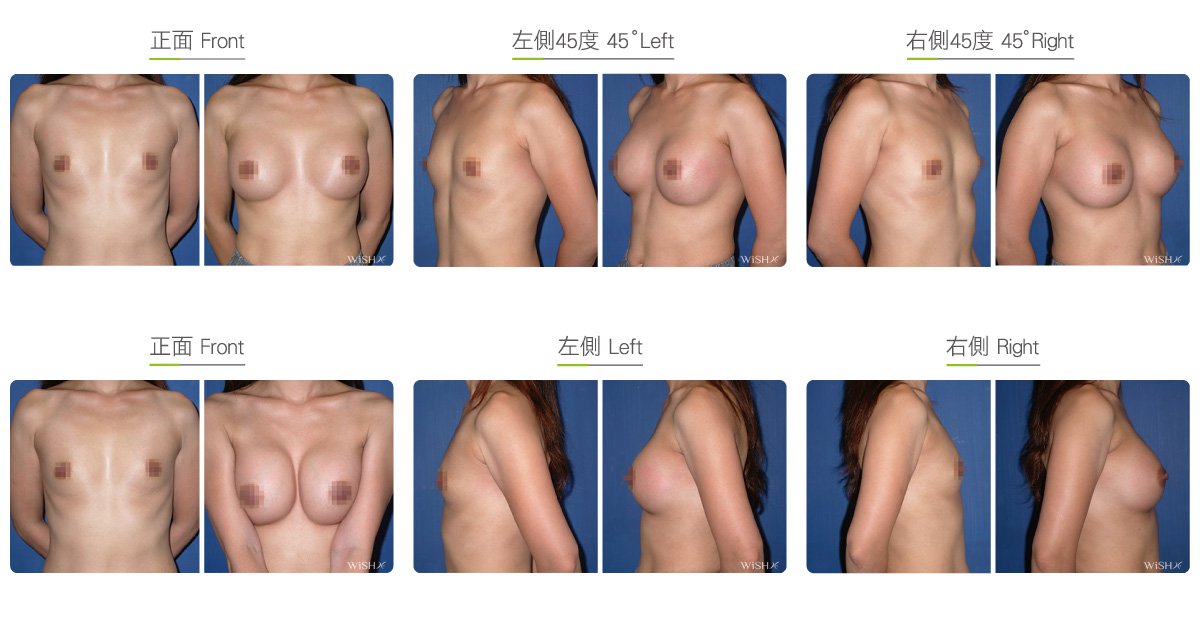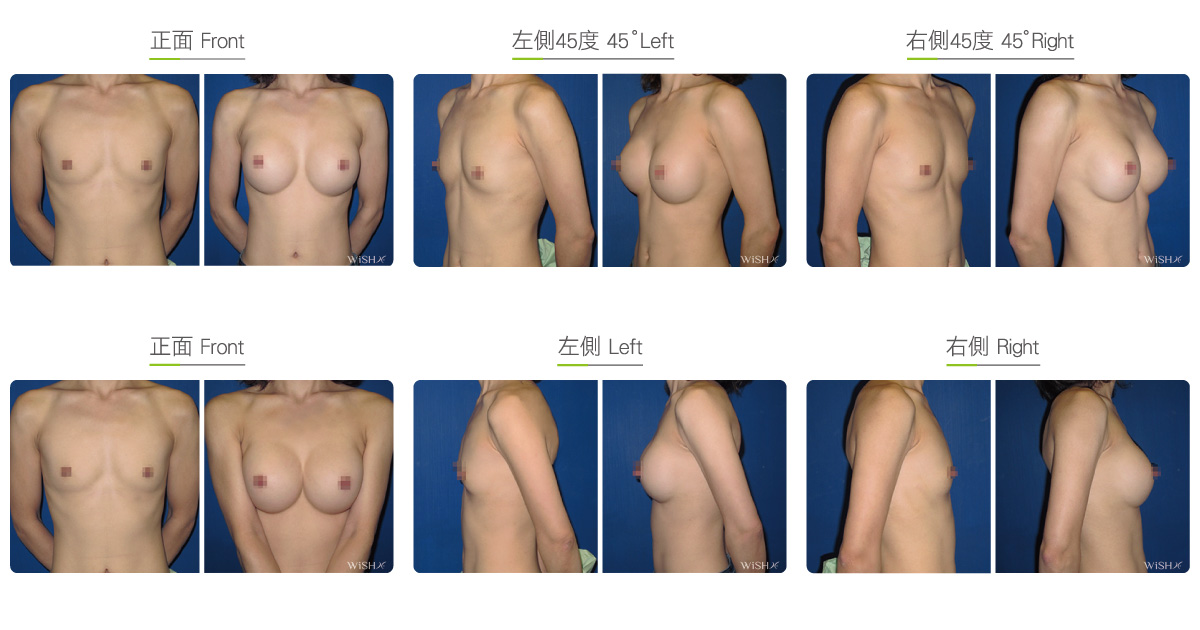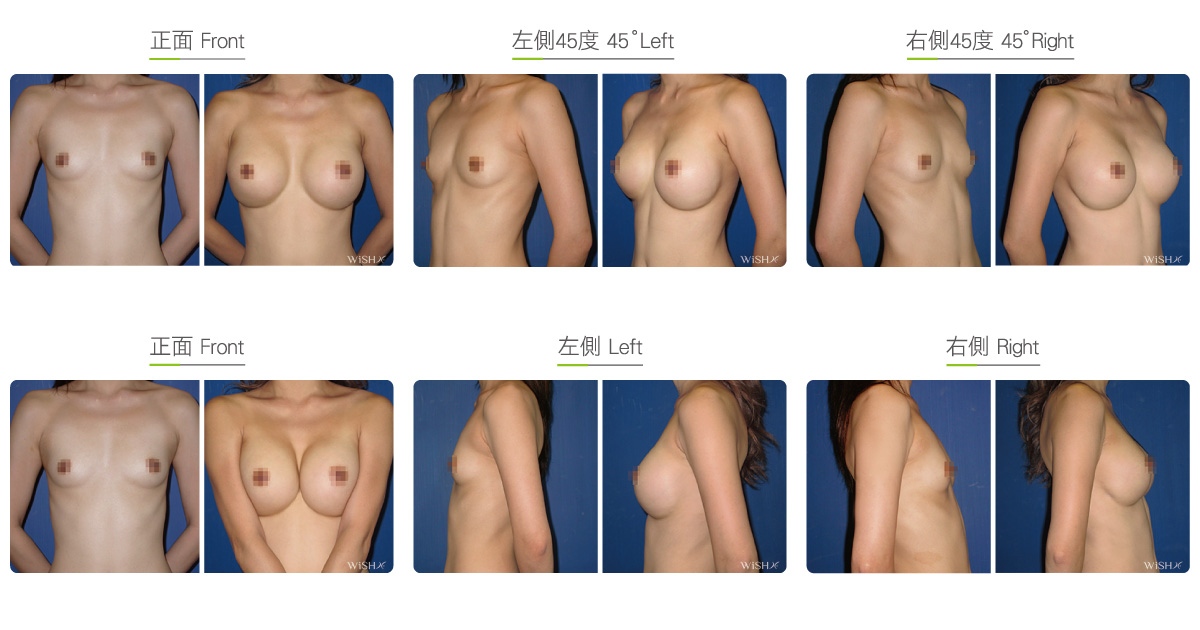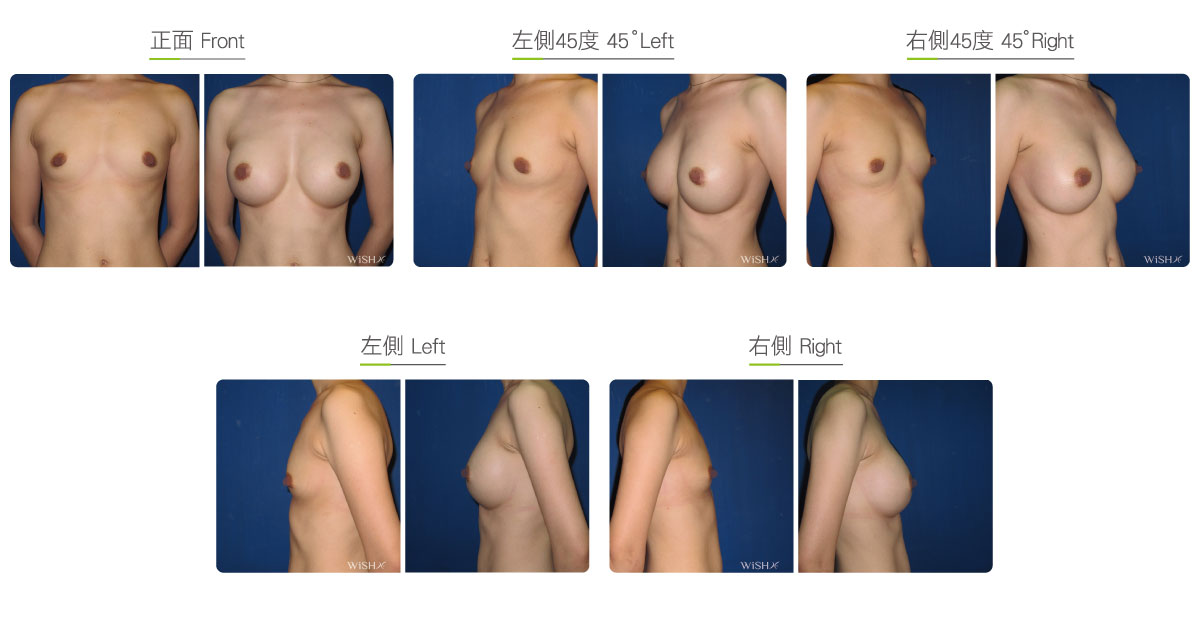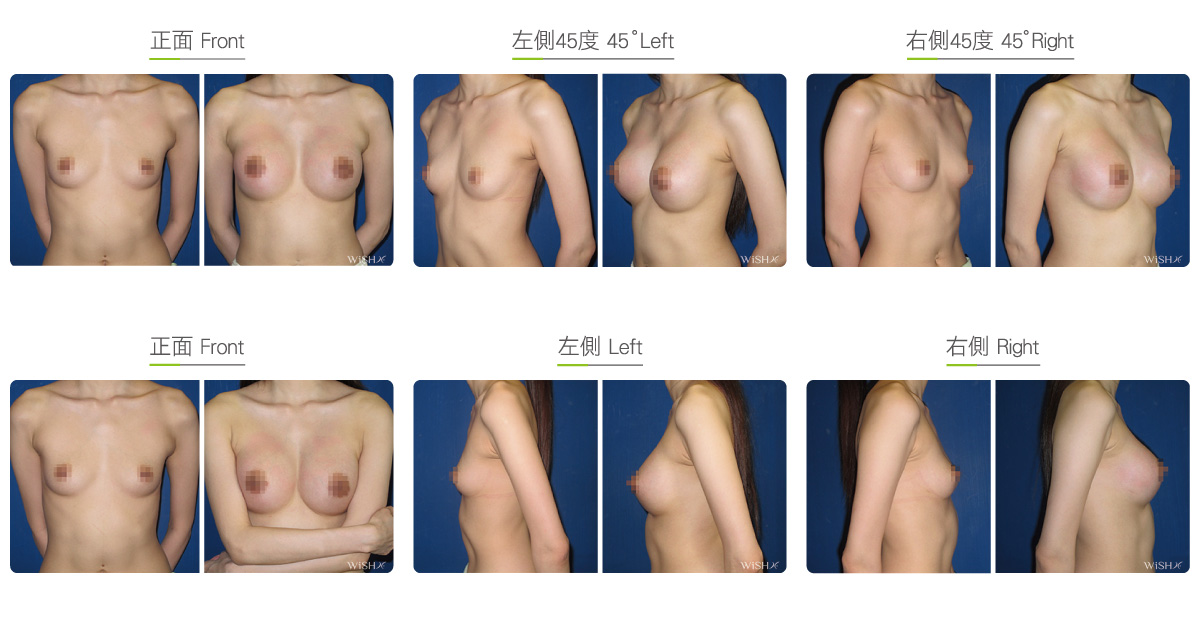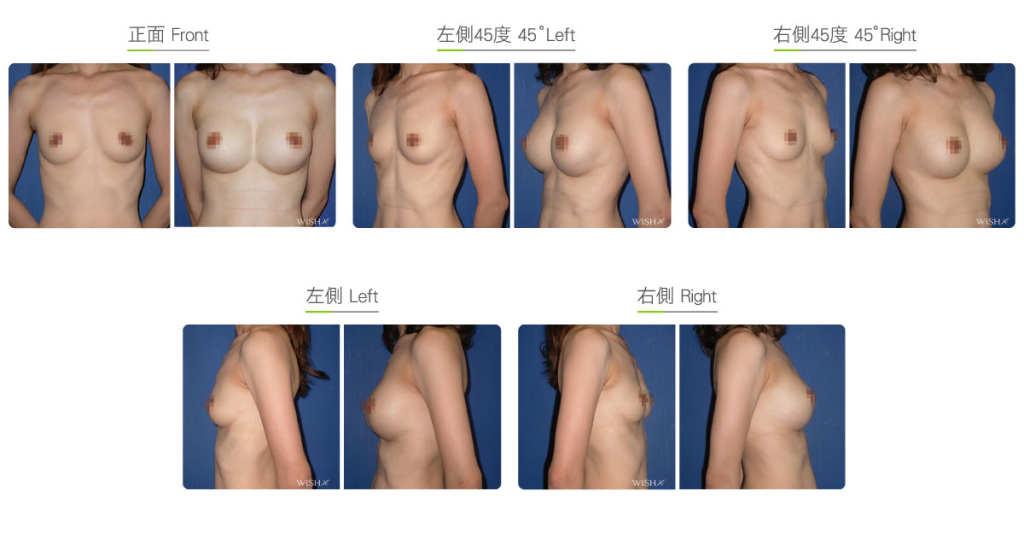Dual Plane Breast Augmentation
It is also known as “partial subfascial, partial submuscular” breast augmentation and is a more complicated subfascial placement procedure. It is ideal only for patients who meet specific requirements. It is called “partial subfascial, partial submuscular” because the lateral two-thirds of the implant near the outer rim is placed under the fascial tissue layer, whereas the medial one-third near the cleavage or lower half of the breast is placed in or under the pectoralis major muscle. The purpose is to utilize partial muscle coverage to increase the thickness of the thin skin near the cleavage, completely enveloping implants near the midline with soft tissues. This not only reduces the chance of visible or palpable implant rippling but also creates a deeper cleavage. This method also extends the benefit of painless subfascial placement to those with thin skin or breast tissue who no longer have to go through the traditional submuscular placement, which is more painful and harder to maintain. Moreover, it could create a deeper V-shaped cleavage, add more elasticity to the area of subfascial placement, and incorporate the advantages of submuscular placement. However, this approach may be limited by patients’ objective conditions, and the implant size should not be too large to avoid an unnatural ball-like appearance or touch. In addition, this procedure is more complicated and time consuming. It requires surgeons to be more experienced in operating an endoscope and requires higher technical expertise than other breast augmentation procedures.
Surgical conditions
Duration
- Type of anesthesia: General anesthesia
- Type of incision: Transaxillary or periareolar incision
- Recovery: Within 2–3 days
- Removal of stitches: 7–10 days
General instructions
Fasting with no food and water before the procedure
- Frequent stretching should be performed for 1 month postoperatively to prevent axillary scar adhesion.
- Tasks and exercises that require excessive arm strength should be avoided, and underwired or push-up bras should not be worn for 1 month postoperatively.
- Smoking and consumption of collagen or vitamin C should be avoided for 3 months postoperatively to prevent the formation of capsules.
- Consistent and regular breast massage should be performed for 6 months postoperatively to maintain breast shape and softness.
Ideal candidates
- Those who would like subfascial implants but have inadequate skin conditions
- Flat-chested individuals who would like larger implants with subfascial placement
- Those who may show implant edges or wrinkles near the midline, as determined by preoperative evaluation
- Those who have chest deformities such as pectus carinatum or pectus excavatum
- Those who cannot endure pain from surgery or massage associated with submuscular placement
Possible complications
- Capsular contracture (<10%)
- uneven breast height
- scar adhesion (underarms)
- hypertrophic scarring (areola)
- implant leakage or rupture
- insensitive or oversensitive nipples (temporary)
Surgical advantages
-
Those with minimal skin tissue can also undergo subfascial placement.
-
Increased skin coverage of implants near the midline to avoid implant rippling from being seen or touched
-
A deeper V-shaped cleavage
-
Almost no postoperative pain
-
Postoperative care and massage method are easier than those in the case of subfascial implants.
Surgical drawbacks
-
The size of implants is limited by the skin condition of patients.
-
Postoperative swelling and bruising could be more noticeable due to partial pectoral muscle separation.
-
Too large implants could cause a ball-like appearance or an unnatural breast shape.
-
Can be used only for silicone implants

